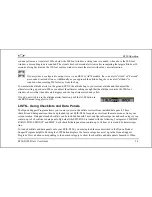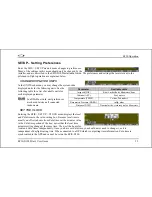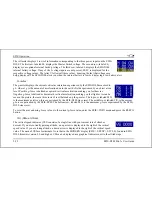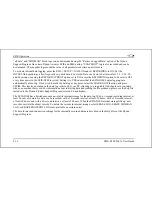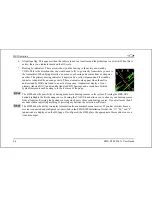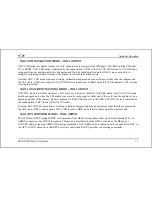
HSI Operation
d.
"LOC" in green text. This indication means that the radio is tuned to a localizer. The glideslope scale is
ourse
ack
Setting the course to the
eading calibration for your EFIS-D100.
t is
t the top of the page and is being pointed to by the
EFIS heading tape. Colored yellow, it can be toggled
visible as well, but may be flagged invalid.
e.
"BC" in yellow text. This indication means that the radio is tuned to a localizer and is in back c
mode. The glideslope scale is visible as well, but may be flagged invalid.
Note:
when flying a b
course on an HSI, no reversal is needed since the CDI indicator spins with the DG. If the course
is set to the runway heading of the ILS, when flying the back course, the CDI is flipped 180
degrees and indicates properly with no reversal needed. If you put the SL-30 into back course
mode, you need to set the course to the heading of the back course runway.
heading of the primary ILS runway causes the CDI needle to be reversed.
2.
Digital heading indicator. The number in this box is the current magnetic heading of the aircraft in degrees from
001 to 360. The accuracy of this data depends on the accuracy of the h
3.
Directional Gyro (DG). The ring of tick marks and numbers acts as a
traditional directional gyro. The current magnetic heading of the aircraf
the heading that is a
heading indicator.
4.
Bug indicator. This user-settable bug also appears on the
on and off using the HSI menu or the main EFIS menu.
The HEADING knob on the HS34 always controls the heading bug. Turning the knob when the bug is not
displayed switches the bug to the on state. Press the HEADING knob to sync the bug to the current heading.
5.
True Airspeed Indicator. If it is possible to calculate true airspee
order to do this the device must have ac
d on the
cess to an outside air
device then it is displayed here. In
temperature from an EFIS or an EMS.
EFIS-D100 Pilot’s User Guide
6-3

